Genre: RPG Developer: Wolf Team Publisher: Telenet Japan Players: 1 Released: 1993
Whenever one looks back on the library of games available for the Sega CD, thoughts invariably turn to the sheer amount of titles that never saw a release outside of Japan. Indeed, there is a plethora of action and RPG games that still languish in obscurity across the Pacific, barred from being enjoyed by westerners due to an unforgiving region lock and a dearth of translators willing to take on the monumental task of making them playable in English.
RPGs are especially afflicted by this situation. The niche status of the genre outside Japan, combined with the turbulent Sega CD market, made it next to impossible for any of these amazing games to come west. Telenet Japan, suffering from massive financial problems, was unable to capitalize on its great catalog for localization, and several anticipated titles, like Annet Again, fell into a publishing limbo. When the company finally went under, so did any hope of their western release.
Among that group, Arcus I-II-III is a title that stands as a looming reminder of just how lucky we were to actually get the few quality games that we did. For every title we found on store shelves, there were many more like Arcus upon which we never set eyes. Here is a collection of three dungeon crawlers that was brought from the brink of cancellation at the last minute by a dying publisher, and though given a limited release in its native Japan, it managed to inject the Mega CD with a level of RPG goodness not equaled by any other title, save perhaps for the Lunar duology. What Telenet put together for this compilation is a trio of traditional dungeon crawlers that offered dozens of hours of challenging gameplay and the kind of presentation that really showed off the benefits of the CD add-on.
Most Genesis gamers will instantly associate the name Arcus with Renovation’s Arcus Odyssey, and the two titles are indeed related. In fact, all four characters are playable in Arcus 1 here, though the true hero of the trilogy is Pikt Aneksios Piyont. A green-haired summoner, he is only six years-old in the first game, but he quickly matures to become the star later on. The first game features the swordsman Jedda Chef as the hero, and during his quest to defeat the dragon Rig Veda, he recruits his former Arcus Odyssey comrades. According to Zigfried, Arcus I-II-III takes place in a reality that is alternate to that of Odyssey, but if one were to place the events of all the games chronologically, Odyssey would occur between Arcus I and II. One thing I did notice was that the wizard Vied looks suspiciously like the magic user Bead Shia from Odyssey. Reportedly, they are indeed one and the same. Our thanks to Zigfried for clearing up the chronology for us!
These games originally saw release in Japan on the X68000, and part two, (Silent Sympony on computers) actually looked more like Exile in many parts. Wolf Team could have simply taken the games and tossed them together on a disc, but instead the group completely overhauled them, and the result is trio of dungeon crawlers that plays in a first-person perspective. New graphics, an awesome redbook soundtrack, and cut scenes galore were made specifically for this release. Furthermore, all three titles have had their storylines retooled to connect directly into one another, giving them a cohesive plot that essentially becomes one massive adventure divided into three scenarios. Each stand alone as a game, complete with its own final boss, but together they play parts in a larger adventure that is unfortunately lost in Japanese.
If one wants to get the best idea of what this collection is like overall, think Shining in the Darkness’ gameplay with Dark Wizard’s cut scenes. Sounds great, doesn’t it? Truly, this is an example of how good the Sega CD could be in the right hands. Arcus I-II-III creates a mixture of great presentation and streamlined gameplay to create an experience that isn’t even hindered by the language barrier. The soundtrack is superb, and the numerous cut scenes scattered throughout each game are long and animated. Consider them a welcome reward that can be enjoyed without having to know the language.
Most likely, the language issue is foremost on my readers’ minds, so let me assure them that it can be easily overcome. Using Ziegfried’s awesome guide, players can easily learn how to navigate the menus, and after about a half hour, I could exchange and equip weapons and armor, use items, buy and sell at shops, and use different spells in and out of combat. There are few total options, and what’s there is standard RPG-issue. Equipment is easily identified when equipped thanks to convenient icons, and spells can be differentiated by their MP cost (not that there are all that many of them to begin with). Traps and puzzles are easily taken care of thanks to a whistle sound that plays whenever players make the right choice.
Of course, players won’t understand squat about the story, but Zeigfried’s guide will give them enough to go on. This compilation is about exploration and combat, and those who enjoyed Shining in the Darkness and other RPGs of its type will get their fill here. Level grinding is only really necessary for major boss battles, and the encounter rate allows for dungeon roaming without constant battle irritation. The load times between screens is minimal, a nice touch on the notoriously slow CD, and this makes moving between areas fluid and seamless.
This decent distribution of battles is complimented by a glorious auto map. Pressing the C button brings it up at any time, and the game saves the last one or two maps that have been used. Not only does this map show stairs, doors, and chests, it also tends to show what’s on the other side of walls. This is due to the large area the player’s arrow opens up around it when walking, and it helps greatly when trying to find the way to the next level or the way out.
The map will come in quite handy, as will the numerous healing items and spells available. Dungeons can be as many as six levels deep, and there is no way to save the game within them. Die, and it’s back to the last save, which is always in town. The benefits of emulation and its save state capability might be the best route here for those of little patience, especially for the aforementioned boss battles. There is some balance here, as thankfully Wolf Team was thoughtful enough to have the characters’ life and magic refill whenever they advance a level.
Arcus features typical turn-based random battles, and characters are organized by rows (three in total). Some cannot attack from the back rows, and magic users like Vied are best left in the back for protection. Characters who are lose all their hit points are automatically sent to the back row, which is problematic when they are revived. Though knocked unconscious instead of killed, they are stuck back there when healed and are often unable to attack for the remainder of the battle unless they have distance attacks like magic. The most they can then do is heal their comrades and focus willpower to refill magic power.
In the midst of all this greatness, there are only a few things that I can truly consider complaints. For one thing, I wish the auto map could scroll. Given the choppiness of 16-bit first-person scaling and the way the different levels within each of the dungeons look the same, it would be very easy to get lost if not for the map. Even so, the problem is that some of the dungeons are especially huge and being able to only see the section where the player arrow is means having to constantly walk around to find something new. It feels like when one has to stumble around to find cell phone reception. I’ll bet there’s a bar over here! Nope? Well, I’m sure one will appear if I walk just a bit more…
Another problem is the uneven difficulty. Some battles are ridiculously easy, and others are insanely hard, and I’m talking about within the same dungeon and among the same foes! A gargoyle might be a push over in one battle, but he comes back pissed and can then take multiple rounds to kill. This possibly has to do with status-effecting attacks, but the Japanese text keeps me from finding out. Boss battles are similar, and most seem to have a single, devastating attack that hits EVERYONE. Moreover, they have several body parts that must be disabled before they go down, and the weaker they get, the more desperate they become. This is where that grinding I mentioned becomes a necessity.
Each of the three games lasts between 15-20 hours on average. With a variety of areas to cover and the massive dungeons to explore, players should get more than a few afternoons of enjoyment out of Arcus. Personally, I would rank this set among the top tier of Sega CD RPGS releases, and it is a crime against gaming that it never found an audience outside of Japan. Perhaps some of the more aspiring translation groups will find the time to rectify this massive oversight, but until then I urge RPG fans the world over to make some time for Arcus I-II-III. It is time very well spent.
SCORE: 9 out of 10

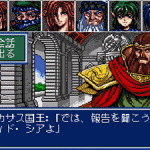
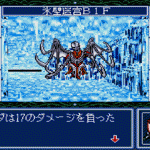
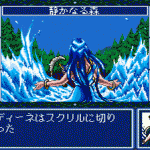
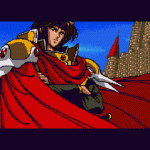
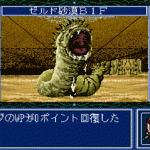
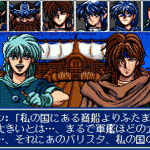
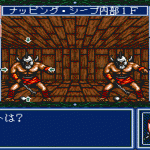
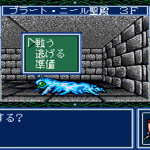
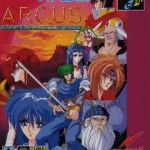
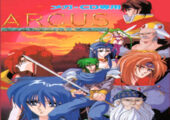
Recent Comments